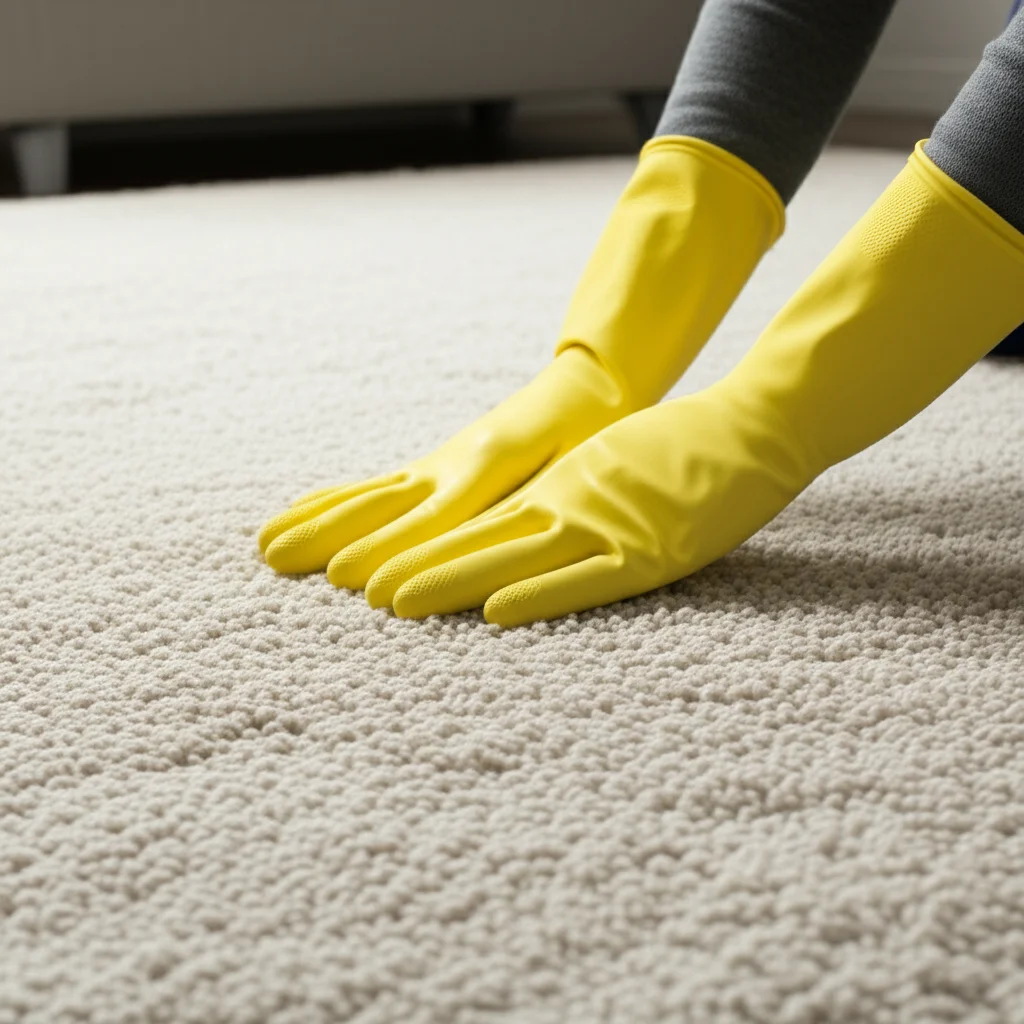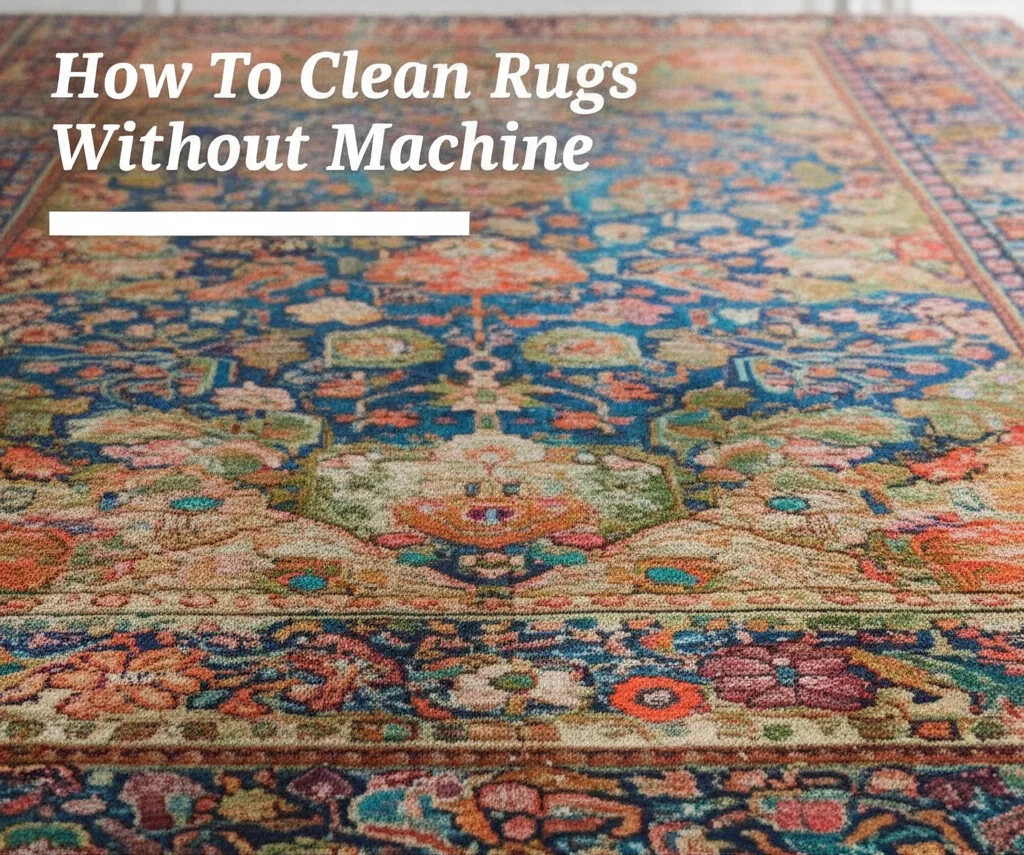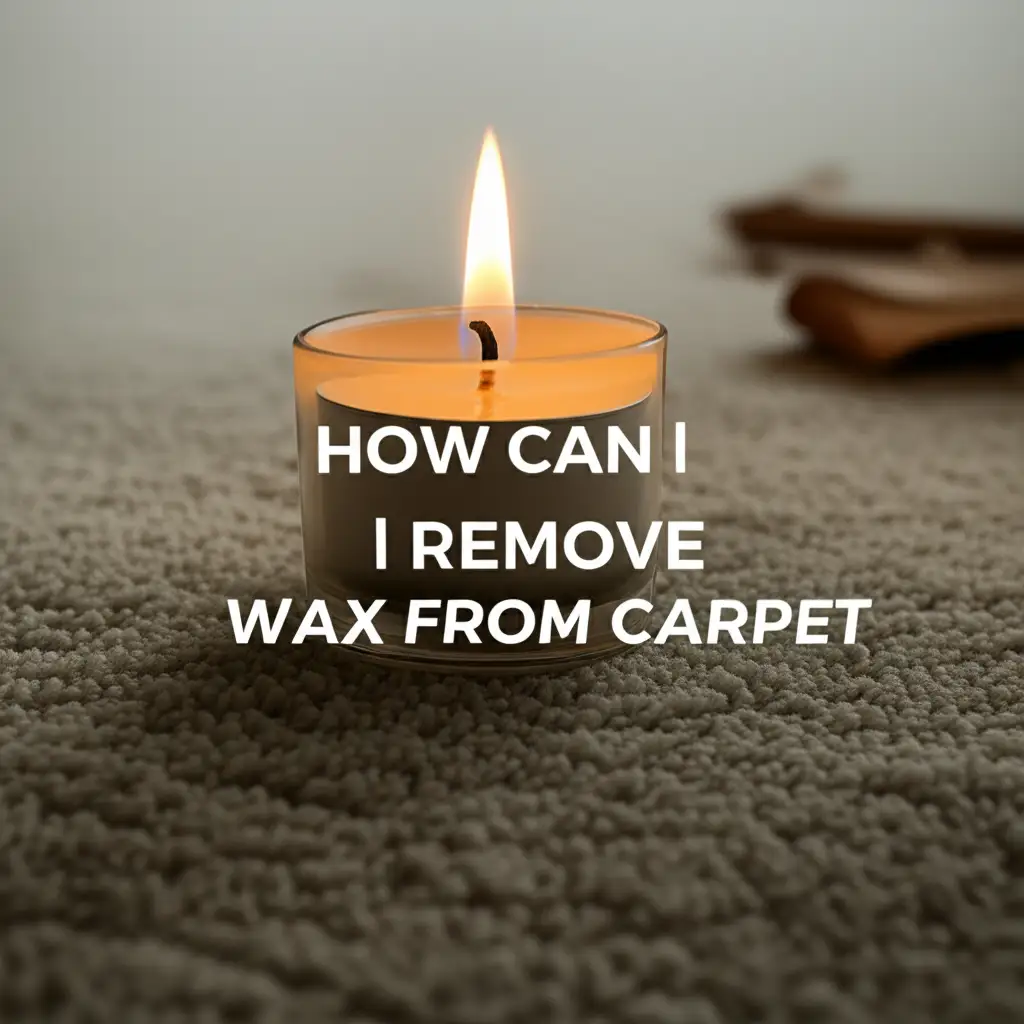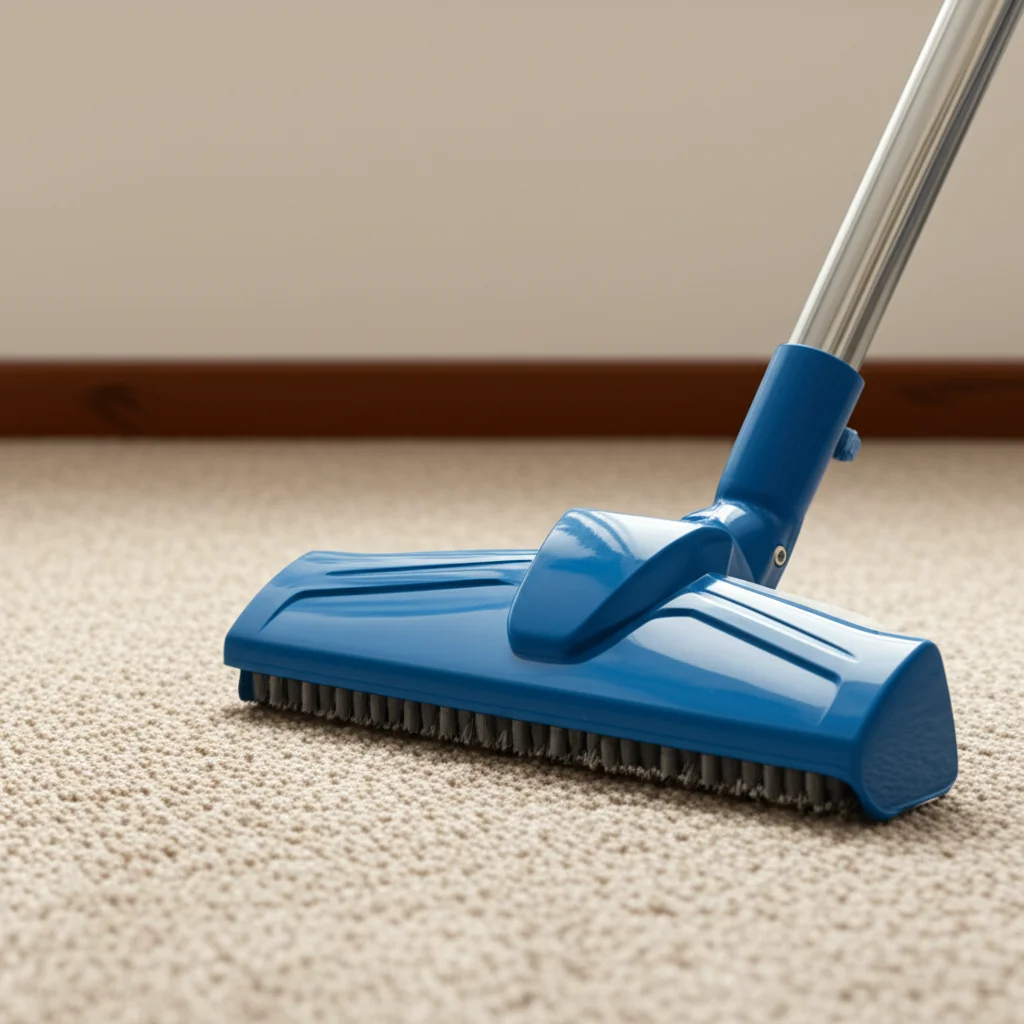· Todd Martin · Home Cleaning · 19 min read
How To Clean A Carpet By Hand
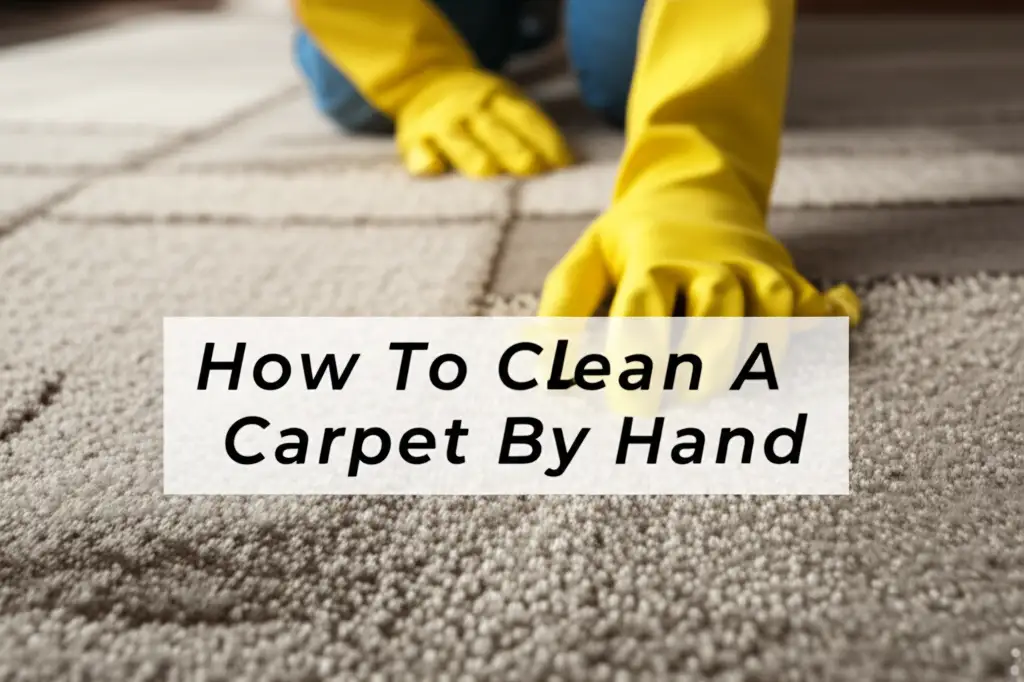
Cleaning Carpet By Hand: Your Essential Guide
Is your carpet looking tired? Are you wondering how to bring it back to life without expensive machines? Learning how to clean a carpet by hand offers a great solution. It saves money and gives you full control over the cleaning process. This method works well for spot cleaning or refreshing a whole room.
I know the satisfaction of seeing a clean, fresh carpet. It makes your entire home feel better. This guide will walk you through every step. We will cover preparing your carpet, mixing cleaning solutions, and tackling different types of stains. Get ready to transform your carpet with simple tools and a little effort.
Takeaway
- Gather essential tools like a vacuum, brushes, and cloths.
- Always test cleaning solutions on a hidden area first.
- Blot stains instead of rubbing to prevent spreading.
- Allow carpets to dry completely to prevent mold.
- Regular vacuuming extends carpet freshness.
Clear Answer to Main Query
To clean a carpet by hand, first vacuum thoroughly. Then, pre-treat stains with appropriate solutions. Apply a mild cleaning solution using a soft brush or cloth, working in small sections. Rinse with clean water and blot dry. Finish by allowing the carpet to air dry completely.
Preparing Your Carpet for Hand Cleaning
Starting with a good foundation makes all the difference when you clean a carpet by hand. Think of it like preparing a canvas before painting. Proper preparation helps you achieve the best possible results. This step is crucial for lifting dirt and debris that hinder deep cleaning.
Neglecting this part means you might just be pushing dirt around. I always ensure my carpet is ready before applying any liquids. This simple step saves time and effort later on. Let’s make sure your carpet is ready for a real transformation.
Vacuuming Thoroughly
Before anything else, vacuum your carpet with care. Use a powerful vacuum cleaner to remove loose dirt, dust, and pet hair. Go over the carpet multiple times, moving in different directions. This helps lift embedded grime from the fibers.
Pay special attention to high-traffic areas and edges. Dirt accumulates quickly in these spots. A clean carpet starts with effective vacuuming. For tips on regular upkeep, consider how to keep carpet clean. This process makes later steps more effective.
Moving Furniture and Clearing the Area
Clear the room as much as possible. Move small furniture pieces out of the way. If you plan to clean a whole room, move all items off the carpet. This gives you full access to the carpet surface.
Even for spot cleaning, clear the immediate area around the stain. You need space to work freely. It also prevents accidental spills on furniture. A clear space makes the cleaning job easier and more efficient.
Protecting Surrounding Areas
Place old towels or plastic sheets under any furniture you cannot move. This protects legs from moisture and cleaning solutions. If cleaning near walls, protect baseboards too. You do not want to splash cleaning liquid onto painted surfaces.
A little protection goes a long way. It stops damage to other parts of your home. This step ensures a clean carpet without extra cleanup elsewhere. Always think about protecting your surroundings.
Essential Tools and Supplies for Hand Cleaning
Having the right tools makes cleaning a carpet by hand much simpler. You do not need fancy gadgets or expensive machinery. Most items are likely already in your home. These tools help you work effectively and safely.
I find that good tools make the job less tiring. They also improve the outcome significantly. Gathering everything beforehand prevents interruptions during the cleaning process. Let us make sure you have everything ready to go.
Brushes and Sponges
You need brushes with different bristle strengths. A soft-bristle brush works for general cleaning and delicate carpets. A stiffer brush helps with stubborn dirt or deeper pile carpets. Old toothbrushes are great for small stains or corners.
Sponges are useful for applying solutions and gentle scrubbing. Make sure they are clean and free of abrasive pads. Different brushes allow you to adapt to various carpet types. This flexibility gives you better results.
Clean Cloths and Towels
Keep a good supply of clean, white cloths or towels handy. White cloths help you see if dirt is coming up. They also prevent dye transfer onto your carpet. You will use these for blotting, applying solution, and rinsing.
Microfiber cloths are excellent for absorption. Old cotton T-shirts also work well. Having plenty means you can swap them out as they get dirty. Fresh cloths are key for thorough rinsing and drying.
Spray Bottles and Buckets
You will need a few spray bottles for applying cleaning solutions and plain water. Label them clearly to avoid confusion. This allows for even application and controlled misting. Buckets are essential for mixing solutions and holding rinse water.
Have at least two buckets: one for the cleaning solution and one for clean rinse water. This prevents cross-contamination. These simple containers are vital for any hand cleaning project. They help keep your process organized and effective.
Vacuum Cleaner (Wet/Dry Optional)
A good dry vacuum is essential for the initial preparation, as discussed earlier. If you have a wet/dry vacuum, it can be useful for extracting excess moisture. This speeds up drying time. However, it is not strictly necessary for hand cleaning.
You can achieve great results by hand-blotting alone. A wet/dry vacuum just makes the final drying step easier. Its use is an optional luxury, not a requirement. Focus on thorough manual blotting if you do not have one.
Choosing and Making Your Cleaning Solutions
The right cleaning solution is critical for effective carpet cleaning by hand. Different types of stains or carpet materials require specific approaches. You want something strong enough to clean but gentle enough not to harm your carpet. Many effective solutions use common household items.
I always test solutions in a hidden spot first. This prevents potential damage or discoloration. Safety and effectiveness are my top priorities. Let’s look at solutions that get the job done right.
Commercial Carpet Shampoos
You can buy commercial carpet shampoos designed for hand use. Read the instructions carefully. Dilute them as recommended by the manufacturer. These products often have specific ingredients to break down carpet dirt.
Always choose a shampoo suitable for your carpet’s material. Some carpets are sensitive to harsh chemicals. A good commercial product can save you time. They often offer convenience for specific cleaning needs.
Homemade Cleaning Solutions
Many effective carpet cleaners exist right in your pantry. These options are often cheaper and safer. Here are a few reliable homemade mixtures:
- Dish Soap and Water: Mix a few drops of mild dish soap with warm water. Use about one teaspoon of soap per quart of water. This is great for general dirt and light stains. It creates a gentle yet effective cleaning foam.
- Vinegar Solution: Combine equal parts white vinegar and water. Add a few drops of essential oil if you dislike the vinegar smell. Vinegar is excellent for deodorizing and breaking down many types of stains. It also helps sanitize.
- Baking Soda Paste: For tough odors or grease stains, mix baking soda with a little water to form a paste. Apply it directly to the stain. Let it sit, then vacuum it up. Baking soda absorbs odors and oils effectively.
- Peroxide Mix (for light carpets): For light-colored carpets, mix equal parts hydrogen peroxide (3%) and water. This can help with stubborn stains and brighten the carpet. Always test this solution first, as it can bleach some materials.
Remember, the goal is to lift the dirt, not to soak the carpet. Too much moisture can cause problems. Keep your solutions simple and effective.
Step-by-Step Hand Cleaning Process
Now we get to the core of how to clean a carpet by hand. This process involves careful application and removal of the cleaning solution. Taking your time with each step ensures a cleaner, fresher carpet. I break it down into manageable parts.
This method gives you control over every fiber. It helps you focus on problem areas. Let’s walk through the steps together for a truly clean result.
1. Spot Treatment Before General Cleaning
Always address specific stains before cleaning the entire area. This prevents the stain from spreading or setting further. Different stains require different treatments. For instance, cleaning old stains from carpet might need a stronger approach.
- Liquid Spills: Blot immediately with a clean, dry cloth. Work from the outside of the spill inward.
- Solid Debris: Scrape off any excess solids with a dull knife or spoon. Then proceed to blot.
- Pet Urine: For urine stains, use an enzymatic cleaner or a vinegar solution. Blot the area well. Learn more about how to clean urine out of carpet.
Apply your chosen spot cleaner to a clean cloth, not directly to the carpet. Dab the stain gently. Do not rub, as rubbing pushes the stain deeper into the fibers. Continue blotting until the stain lifts.
2. Applying the Cleaning Solution
Once spots are treated, prepare your general cleaning solution. Pour it into a spray bottle for even distribution. Or, use a bucket if you prefer to dip your brush. Work in small sections, about 2x2 feet at a time.
Lightly mist the carpet section with your solution. Do not over-saturate the carpet. You only want the fibers to be damp, not soaked. Excess moisture can lead to mold or mildew. This controlled application prevents problems.
3. Brushing and Agitating the Carpet
After applying the solution, use your chosen brush. Gently agitate the carpet fibers. Work the solution into the pile using small, circular motions. For stubborn areas, use back-and-forth strokes.
The goal is to lift the dirt from the fibers. You will see foam form, which helps trap the dirt. Avoid scrubbing too hard, especially on delicate carpets. A gentle touch works wonders. This step helps loosen embedded grime.
4. Rinsing the Carpet
Rinsing is vital for removing the cleaning solution and lifted dirt. Fill a clean bucket with plain, cool water. Dip a clean white cloth into the water. Wring it out well so it is damp, not dripping.
Blot the cleaned carpet section with the damp cloth. Rinse the cloth frequently in the clean water. Continue blotting until no more suds appear on the cloth. This removes residue that could attract future dirt. Proper rinsing leaves your carpet feeling fresh.
5. Drying the Carpet
Drying is the final and crucial step. Use dry, clean towels to blot the carpet vigorously. Press down firmly to absorb as much moisture as possible. You want the carpet to feel only slightly damp to the touch.
- Increase Air Circulation: Open windows and doors. Use fans or a dehumidifier to speed up drying.
- Avoid Walking on Wet Carpet: Do not walk on the carpet until it is completely dry. Walking on it can re-deposit dirt or flatten the pile.
- Check for Dampness: Feel the carpet periodically. Ensure it is dry all the way through before replacing furniture.
Complete drying prevents mildew and musty smells. It also helps maintain the carpet’s appearance. You can also explore how to deep clean carpet without machine for more drying tips.
Tackling Specific Carpet Challenges
Cleaning a carpet by hand often means dealing with more than just general dirt. Specific types of stains or common issues need different strategies. Knowing how to handle these makes your cleaning efforts more effective. I have faced many carpet challenges over the years.
Addressing these problems quickly is key. It stops them from becoming permanent. Let’s look at some common issues and how to resolve them. Your carpet will thank you.
Pet Stains and Odors
Pet accidents are common, but you can clean them. The key is acting fast. For fresh urine, blot up as much liquid as you can with paper towels. Press firmly. Then, apply an enzymatic cleaner. These cleaners break down the urine proteins that cause odor.
If you do not have an enzymatic cleaner, a mixture of equal parts white vinegar and water works well. Saturate the area, let it sit for 10-15 minutes, then blot dry. For tough odors or old stains, sprinkle baking soda over the area once it is dry. Let it sit overnight, then vacuum it up. This helps absorb remaining smells. For more details on this, see how to clean pee out of carpet.
Food and Drink Spills
Food and drink spills require quick action. For liquids like coffee or soda, blot immediately with a clean cloth. For solid foods, scrape off as much as possible first. Then, create a solution of mild dish soap and water.
Apply the solution to a clean cloth and dab the stain. Work from the outside in to prevent spreading. Rinse by dabbing with a clean, damp cloth. Continue until the stain lifts. For specific issues like vomit, learn how to clean throw up out of carpet effectively.
Mud and Dirt Tracks
Mud and dirt can be tricky. Let the mud dry completely first. Trying to clean wet mud often spreads it. Once dry, vacuum up all loose dirt. Use a stiff brush to gently break up dried clumps.
After vacuuming, mix a small amount of liquid laundry detergent with water. Apply this solution sparingly to the remaining stain with a cloth. Gently blot and work the solution into the fibers. Rinse with a clean, damp cloth. Repeat until the stain is gone. This method lifts the dirt without scrubbing it deeper.
Maintaining a Clean Carpet After Hand Cleaning
Cleaning your carpet by hand is a big step, but maintenance keeps it looking great. A clean carpet makes your whole room feel fresh. Regular care extends the time between deep cleanings. I find that prevention is always better than cure.
These simple habits protect your investment. They keep your home environment healthier and more inviting. Let’s talk about keeping that fresh feeling lasting longer.
Regular Vacuuming Schedule
Frequent vacuuming is your best defense against dirt buildup. Aim to vacuum high-traffic areas at least twice a week. Vacuum less-used rooms once a week. This removes loose dirt before it gets embedded into the carpet fibers.
Use a vacuum with good suction. Go over areas multiple times. This helps lift dirt and refreshes the pile. Regular vacuuming prevents significant dirt accumulation. It reduces the need for frequent hand cleaning sessions.
Using Doormats and Rugs
Place sturdy doormats at all entry points to your home. Encourage family members and guests to wipe their feet. This traps dirt and moisture before it reaches your carpet. A good doormat can capture a lot of outside debris.
Consider placing area rugs in high-traffic zones over your carpet. These rugs can be easily removed and cleaned. They act as a protective barrier. Area rugs also add style to your room.
Addressing Spills Immediately
The fastest response is always the best response for spills. Do not let liquids or solids sit on the carpet. Blot liquids quickly with a clean cloth. Scrape up solids with a spoon or dull knife.
Prompt action prevents stains from setting. It also makes cleaning much easier. Keep cleaning supplies handy for quick spill response. Immediate cleanup is key to stain prevention.
Professional Cleaning periodically
Even with diligent hand cleaning, carpets benefit from professional cleaning every 12-18 months. Professional cleaners have specialized equipment. They can deep clean carpets in ways manual methods cannot. This removes deeply embedded dirt and allergens.
Professional cleaning extends your carpet’s lifespan. It also keeps your home air quality better. Consider it an important part of your carpet care routine. This helps maintain your carpet’s freshness for years.
Advanced Tips for Hand Carpet Cleaning
Once you master the basics of how to clean a carpet by hand, you can explore advanced techniques. These tips offer solutions for particularly stubborn issues or add extra polish to your cleaning efforts. I have learned these tricks from years of experience.
They help you handle those tricky situations. They also ensure your carpet looks its absolute best. Let’s delve into some ways to take your hand cleaning skills to the next level.
Deodorizing Your Carpet
Even after cleaning, some carpets may hold onto odors. Baking soda is your best friend here. Sprinkle a generous amount of dry baking soda over the entire carpet. Let it sit for several hours, or even overnight.
Baking soda absorbs odors naturally. After it sits, vacuum it up thoroughly. For an extra fresh scent, you can mix a few drops of essential oil (like lavender or tea tree) with the baking soda before sprinkling. This simple step leaves your carpet smelling wonderfully fresh.
Tackling Specific Spot Types (Grease, Gum, Wax)
Some spots need special attention:
- Grease: Sprinkle cornstarch or baking soda on the fresh grease stain. Let it sit for 30 minutes to absorb the oil. Vacuum it up. Then, dab with a cloth moistened with a small amount of rubbing alcohol or dish soap solution. Rinse thoroughly.
- Gum: Harden the gum with an ice cube. Once it is solid, carefully scrape it off with a dull knife. Be gentle not to damage carpet fibers. Use a tiny bit of rubbing alcohol on a cloth to remove any sticky residue.
- Wax: Place a paper bag or a brown paper towel over the hardened wax. Gently iron over the paper bag with a warm iron (low setting). The wax will melt and transfer to the paper bag. Move the bag to a clean spot as the wax transfers. Continue until the wax is gone. Blot any remaining color with rubbing alcohol.
These methods target specific stain chemistry. They provide effective removal without harsh chemicals. Always test on an inconspicuous area first.
Restoring Carpet Pile
After cleaning, carpet pile can sometimes look flattened. You can restore its fluffiness with a few simple steps. Lightly mist the area with water using a spray bottle. Do not soak it. Then, use a stiff-bristle brush or a carpet rake.
Gently brush the fibers upward. This lifts and separates the flattened pile. For stubborn areas, you can also use a spoon. Gently scrape the back of the spoon across the flattened fibers. This helps them stand up again. Restoring the pile gives your carpet a refreshed and fuller look.
When Hand Cleaning Might Not Be Enough
While learning how to clean a carpet by hand offers many benefits, it is not always the complete answer. There are times when your manual efforts might fall short. Knowing these limitations helps you decide when to seek professional help. I have learned to recognize when a carpet needs more than I can offer alone.
Understanding these boundaries saves you time and effort. It also ensures the longevity and cleanliness of your carpet. Let us explore when to consider other options.
Deep-Seated Dirt and Grime
Years of foot traffic can embed dirt deeply into carpet fibers. Hand cleaning can remove surface dirt and fresh stains effectively. However, it may not reach the grime at the very base of the carpet. This deep-seated dirt can make your carpet look dull.
If your carpet looks uniformly dingy despite regular hand cleaning, it might need more. Professional carpet cleaners use powerful extraction machines. These machines can pull out dirt that is beyond the reach of manual methods. They offer a much more thorough deep clean.
Extensive Stains or Damage
Some stains are simply too large or too old for hand cleaning. Large spills that have soaked through the carpet backing are difficult to treat manually. Stains from permanent markers, dyes, or extensive pet accidents might also be too challenging. These situations often require specialized equipment or chemicals.
Beyond stains, physical damage like burns, tears, or extensive fraying cannot be fixed by cleaning alone. In these cases, professional repair or replacement might be necessary. Hand cleaning focuses on surface appearance, not structural integrity.
Odors That Persist
Even after treating specific pet stains, a general musty or pet odor might linger. This often happens if moisture has reached the carpet padding or subfloor. Hand cleaning mainly addresses the carpet fibers themselves. It does not penetrate deep enough to treat underlying odor sources.
Professionals have tools to assess and treat odors embedded in padding. They can use ozone treatments or powerful deodorizers. If your home still smells despite your best efforts, it is a sign that deeper odor sources need attention.
Time and Effort Considerations
Cleaning a whole room of carpet by hand takes a significant amount of time and effort. It involves scrubbing, rinsing, and blotting section by section. For large areas, this can be physically demanding. You might spend an entire day, or even longer, cleaning a single room.
If you have a busy schedule or physical limitations, professional cleaning is a practical alternative. They complete the job much faster. Consider the value of your time and energy. Sometimes, paying for professional service is worth the convenience.
FAQ
Is it effective to clean a whole room of carpet by hand?
Yes, you can clean a whole room of carpet by hand. It requires more time and effort than spot cleaning. Work in small sections, roughly 2x2 feet at a time. This method gives you control over each area. It ensures thoroughness without expensive machines.
What is the best homemade solution to clean carpet by hand?
A mixture of warm water and a few drops of mild dish soap is a very effective homemade solution. For odors or tough stains, a 50/50 mix of white vinegar and water also works well. Always test any homemade solution in a hidden spot first.
Can I use a regular mop to clean carpet by hand?
No, a regular mop is not suitable for cleaning carpets by hand. Mops are designed for hard surfaces and will likely over-saturate your carpet. This can lead to mold, mildew, and damage. Use a soft-bristle brush, clean cloths, and a spray bottle for better results.
How do I dry my carpet after hand cleaning?
After hand cleaning, blot the carpet thoroughly with dry, clean towels to absorb as much moisture as possible. Then, increase air circulation by opening windows and using fans. A dehumidifier can also speed up the drying process. Do not walk on the carpet until it is completely dry.
How often should I clean my carpet by hand?
The frequency depends on carpet traffic and spills. For high-traffic areas or common spills, clean them as needed. For a general refresh, you might clean your entire carpet by hand every 6-12 months. Regular vacuuming helps reduce the need for frequent deep hand cleaning.
Can hand cleaning remove old, set-in stains?
Hand cleaning can sometimes improve or remove old, set-in stains, but it is not guaranteed. Old stains have had time to bond with the carpet fibers. You may need specific stain removers or a paste of baking soda and vinegar for tougher old stains. Multiple applications might be necessary.
Conclusion
Cleaning a carpet by hand might seem like a big job, but it is a rewarding one. You can achieve amazing results with simple tools and a little effort. I have shown you how to clean a carpet by hand effectively, from preparation to tackling tough stains. You now have the knowledge to refresh your living space without expensive equipment.
Remember, patience and proper technique are your best friends. Regular maintenance, like vacuuming and quick spill clean-up, will keep your carpet looking its best. Give these methods a try and enjoy the fresh feeling of a truly clean carpet. Your home will thank you for it!


